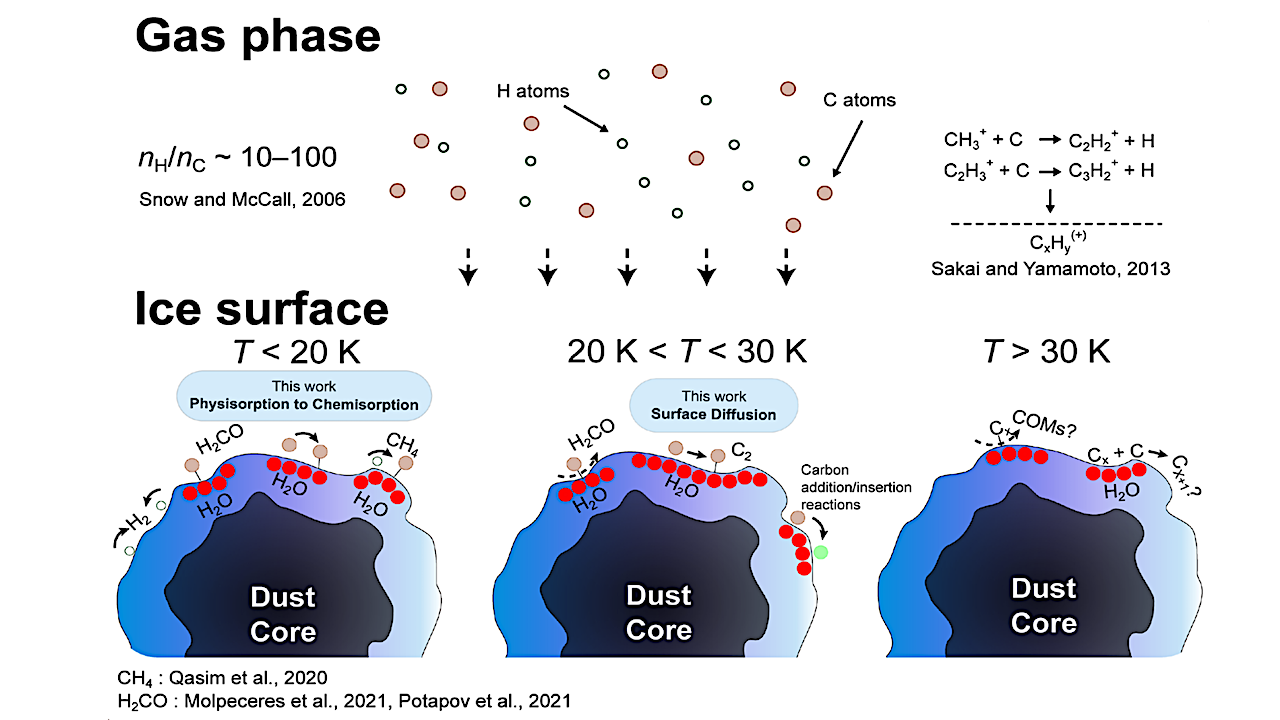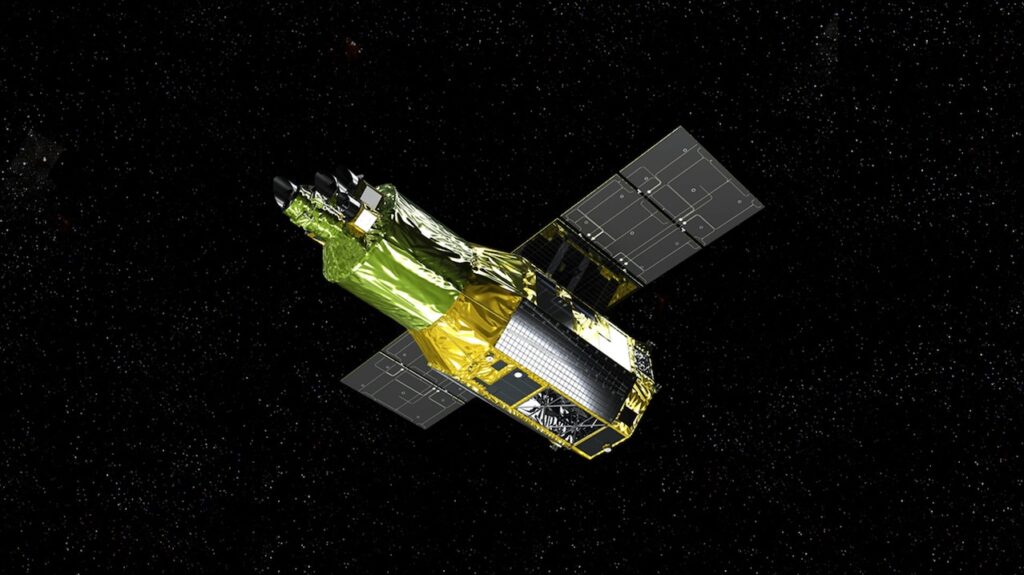Surface Diffusion of Carbon Atoms as a Driver of Interstellar Organic Chemistry

Many interstellar complex organic molecules (COMs) are believed to be produced on the surfaces of icy grains at low temperatures. Atomic carbon is considered responsible for the skeletal evolution processes, such as C-C bond formation, via insertion or addition reactions.
Before reactions, C atoms must diffuse on the surface to encounter reaction partners; therefore, information on their diffusion process is critically important for evaluating the role of C atoms in the formation of COMs. In situ detection of C atoms on ice was achieved by a combination of photostimulated desorption and resonance enhanced multiphoton ionization methods. We found that C atoms weakly bound to the ice surface diffused approximately above 30 K and produced C2 molecules. The activation energy for C-atom surface diffusion was experimentally determined to be 88 meV (1,020 K), indicating that the diffusive reaction of C atoms is activated at approximately 22 K on interstellar ice.
The facile diffusion of C at T > 22 K atoms on interstellar ice opens a previously overlooked chemical regime where the increase in complexity of COMs as driven by C atoms. Carbon addition chemistry can be an alternative source of chemical complexity in translucent clouds and protoplanetary disks with crucial implications in our current understanding on the origin and evolution of organic chemistry in our Universe.
Masashi Tsuge, Germán Molpeceres, Yuri Aikawa, Naoki Watanabe
Comments: 33 pages (main + SI), 14 figures, 1 table
Subjects: Astrophysics of Galaxies (astro-ph.GA)
Cite as: arXiv:2308.02181 [astro-ph.GA] (or arXiv:2308.02181v1 [astro-ph.GA] for this version)
Submission history
From: Masashi Tsuge
[v1] Fri, 4 Aug 2023 07:54:16 UTC (2,252 KB)
https://arxiv.org/abs/2308.02181
Astrobiology, Astrochemistry,








